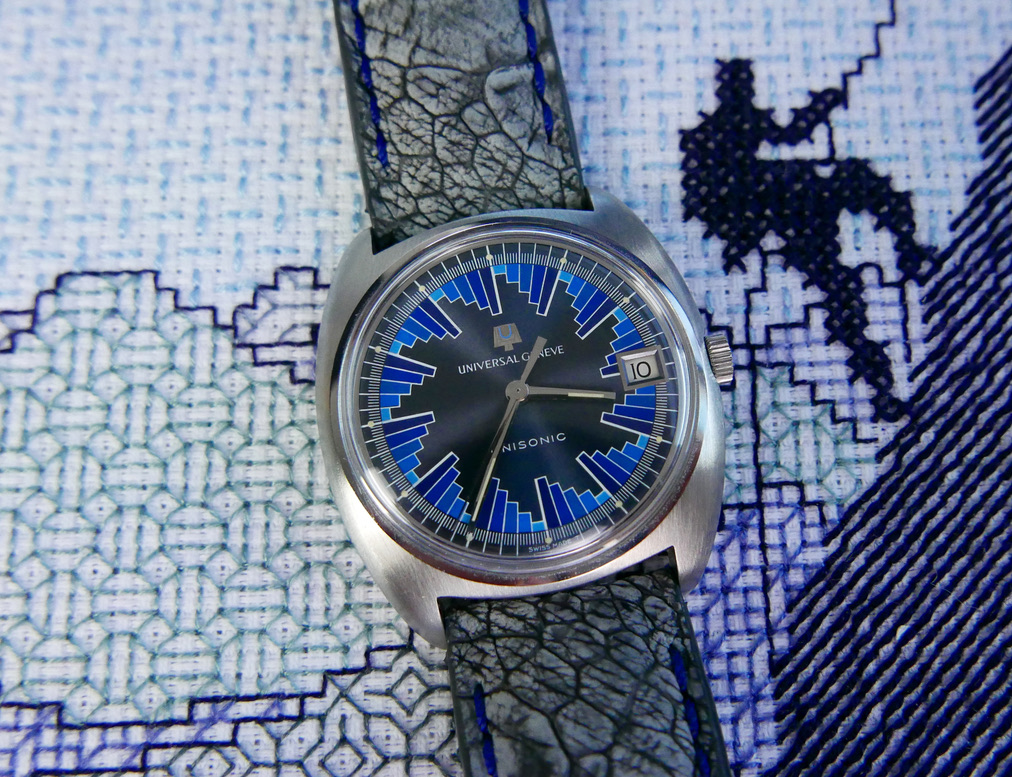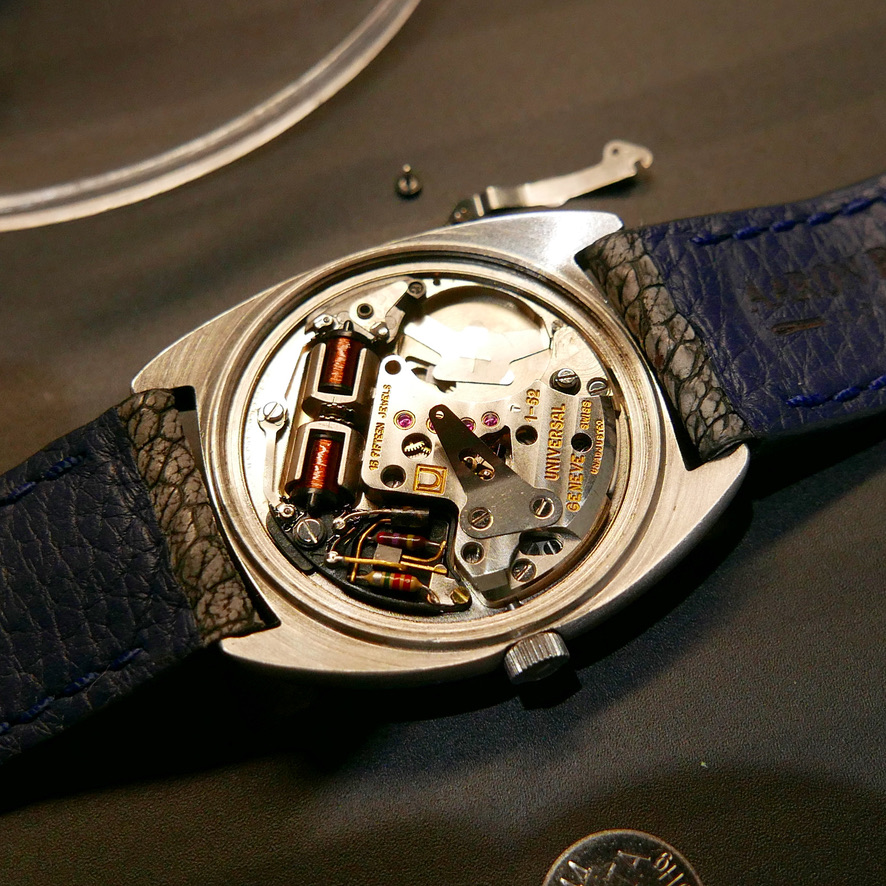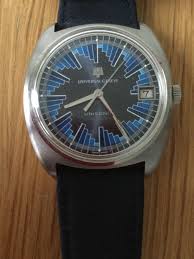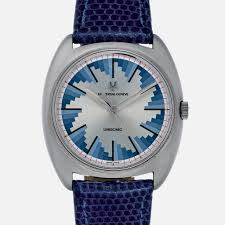yvrclimber
·The blue Buzzsaw...
Before there was quartz, there were tuning fork movements.
Introduced by Bulova in 1959, the Accutron movement replaced the standard regulator (balance wheel) with a pair of wired tuning forks (copper spools on the left of the photo). Their high frequency (360 Hz), when an electric charge was applied to them, allowed for great precision. Universal Geneve created their own variant of the technology in the Unisonic. Today's example is my late 60's Universal Genève Unisonic (aka Buzzsaw dial).
Longer term, quartz movements depending on the electrically-induced oscillations of a quartz crystal as a regulator proved to be cheaper, more dependable and easier to service. The tuning fork's heyday was short lived, dying off quickly after Seiko's introduction of the Quartz Astron in December of 1969.
Who says it has to be mechanical to be cool?
Before there was quartz, there were tuning fork movements.
Introduced by Bulova in 1959, the Accutron movement replaced the standard regulator (balance wheel) with a pair of wired tuning forks (copper spools on the left of the photo). Their high frequency (360 Hz), when an electric charge was applied to them, allowed for great precision. Universal Geneve created their own variant of the technology in the Unisonic. Today's example is my late 60's Universal Genève Unisonic (aka Buzzsaw dial).
Longer term, quartz movements depending on the electrically-induced oscillations of a quartz crystal as a regulator proved to be cheaper, more dependable and easier to service. The tuning fork's heyday was short lived, dying off quickly after Seiko's introduction of the Quartz Astron in December of 1969.
Who says it has to be mechanical to be cool?





